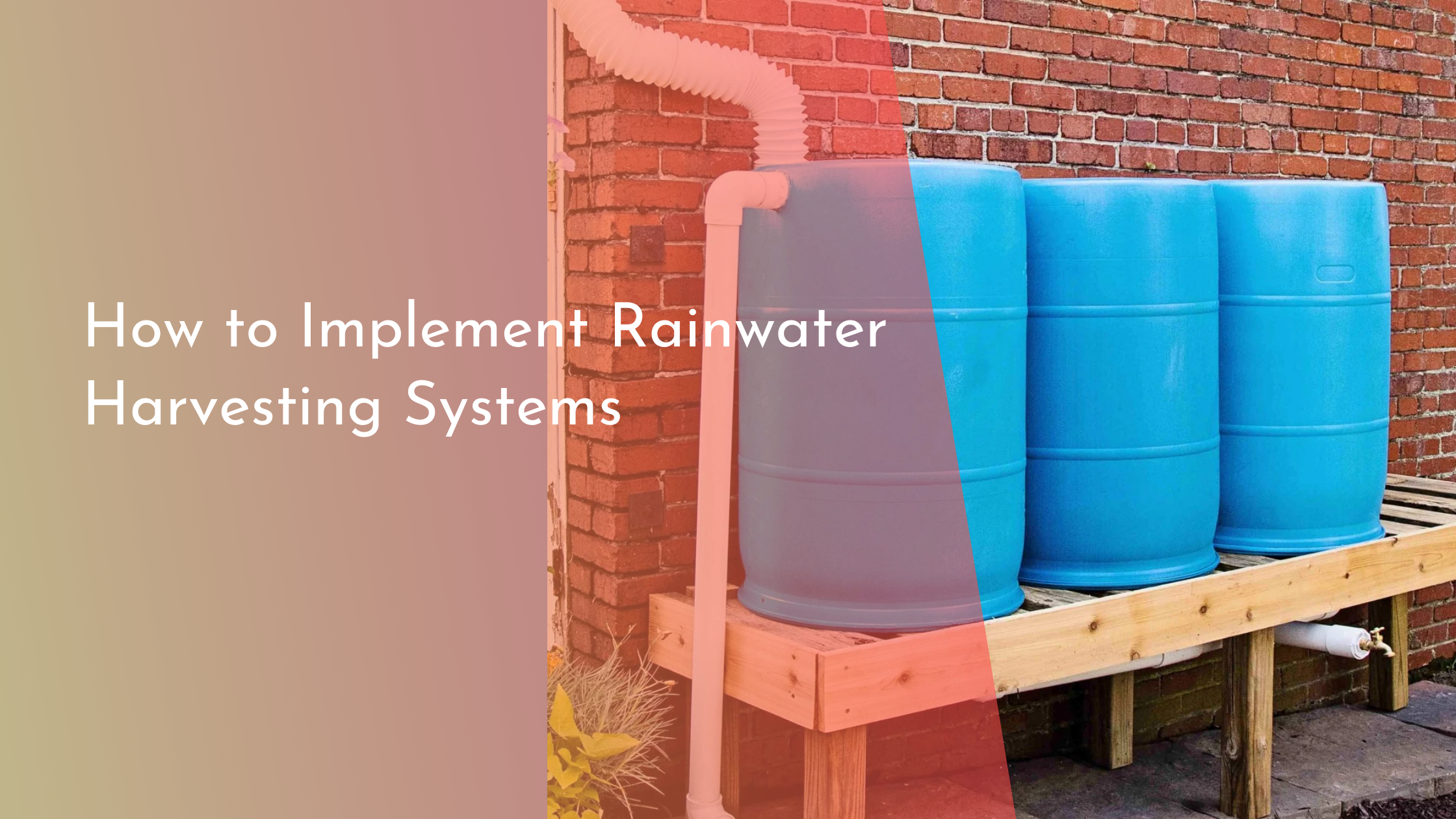How to Implement Rainwater Harvesting Systems
Rainwater harvesting is an eco-friendly practice that involves collecting and storing rainwater for future use. With growing concerns over water scarcity and the increasing demand for sustainable solutions, rainwater harvesting systems are gaining popularity among homeowners and businesses alike. Implementing such a system not only helps conserve water but also reduces water bills and promotes self-sufficiency. In this article, we’ll explore the fundamentals of rainwater harvesting, outline the essential components of a system, provide a step-by-step guide for installation, and offer tips for maintaining your system for long-term success.
Understanding the Basics of Rainwater Harvesting
Rainwater harvesting is the process of capturing and storing rainwater for reuse. This can be as simple as collecting runoff from your roof into a barrel or as complex as a system that supplies water for household and irrigation needs. The practice has been around for centuries, but modern technology has made it more efficient and accessible than ever. Rainwater can be used for a variety of purposes, including watering gardens, flushing toilets, and even as a backup drinking water supply, provided it’s properly treated.
The benefits of rainwater harvesting are numerous. It reduces dependence on municipal water supplies, decreases energy consumption associated with water transportation, and minimizes stormwater runoff that can lead to erosion and flooding. Additionally, using harvested rainwater can improve the health of your landscape by providing natural, chemical-free water. Understanding these basics is the first step in appreciating the full potential of rainwater harvesting for your home or business.
Essential Components of a Harvesting System
A comprehensive rainwater harvesting system includes several key components that work together to efficiently capture and store rainwater. The catchment area, typically a roof, is where the rainwater is collected. The type and condition of your roof can impact the quality and quantity of water collected, so it’s important to ensure it’s made of safe materials and is in good condition.
Once collected, the rainwater is directed through gutters and downspouts into a filtration system that removes debris and other contaminants. This filtered water is then stored in tanks or cisterns, which vary in size and material based on storage needs and available space. Additional components, like pumps and treatment systems, ensure that the water is usable for desired applications, whether it’s for irrigation or potable uses. Properly designed and maintained, these components form an efficient system that maximizes your water harvesting potential.
Step-by-Step Guide to System Installation
The installation of a rainwater harvesting system begins with assessing your water needs and evaluating the catchment area. Determine the amount of water you wish to harvest and the size of the storage capacity required. This involves calculating the roof area and expected rainfall to size the system appropriately. With these parameters in mind, select suitable storage tanks and a filtration system that meets your quality requirements.
Next, install or upgrade gutters and downspouts to direct rainwater from the catchment area to the storage tanks. It’s crucial to position the tanks on a stable, level surface, preferably close to where the water will be used. Once the tanks are in place, connect them to the downspouts and install the filtration system. Ensure all connections are watertight to prevent leaks and contamination. Depending on your intended use for the water, additional equipment like pumps and treatment systems may be needed. Follow local regulations and guidelines throughout the installation to ensure compliance and optimal system performance.
Maintaining Your System for Long-Term Success
Regular maintenance is key to ensuring the efficiency and longevity of your rainwater harvesting system. Start by routinely inspecting and cleaning catchment areas, such as roofs and gutters, to remove debris that can impair water quality and clog systems. Filters and screens should also be checked and cleaned periodically to maintain optimal water flow and prevent contamination.
Storage tanks require particular attention to prevent algae growth and sediment buildup. Ensure that tanks are securely covered to block sunlight and prevent contaminants from entering. Inspect tanks for cracks or leaks and repair them promptly. Additionally, if you use pumps or treatment systems, follow manufacturer guidelines for maintenance and servicing to keep them operational. By keeping your system in good condition, you can enjoy the benefits of rainwater harvesting for years to come.
Rainwater harvesting is a practical and rewarding way to make a positive environmental impact while reducing your water expenses. By understanding the basics, assembling the right components, installing the system carefully, and maintaining it diligently, you can create a sustainable water source that benefits both you and the planet. With each rainfall, you’ll be reminded of your role in preserving natural resources, contributing to a greener world, and securing a reliable water supply for the future. So, embark on this eco-friendly journey and let nature’s bounty flow into your everyday life!

